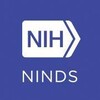
The Effectiveness and Safety of Butylphthalide Soft Capsules in Secondary Prevention of Ischemic...
StrokeTransient Ischemic AttackThe purpose of the study is to evaluate the efficacy and safety of Butylphthalide Soft Capsules (En Bi Pu, NBP) in Secondary Prevention of Ischemic Stroke

Understanding Different Parameters in Locomotor Training (a Type of Walking Training) for Person...
StrokeThis is a research study to understand how people who have experienced a stroke walk in order to develop better and more effective types of therapy. Data collected from people who have experienced a stroke and healthy individuals will be used to compare a neurologically healthy person to someone, which has sustained an injury.

Sex Differences in Vascular Markers of Stroke Risk
StrokeThe purposes of this study are to quantify and compare vascular function in men and women, and to determine the effect of age, race-ethnicity, cardiovascular risk factors, biological markers and hormonal markers on vascular measures to establish gender-specific models.

Stroke Team Remote Evaluation Using a Digital Observation Camera
StrokeThe purpose of this trial is to determine if an experimental remote video camera system is an effective way for a stroke specialist to evaluate stroke patients from a distant site.

Intravenous Ancrod for the Treatment of Acute Ischemic Stroke Within 6 Hours After Onset of Symptoms...
Brain InfarctionCerebral Ischemia1 moreTreatment of acute stroke is still difficult and the only specific drug approved (rtPA) can only be administered if treatment starts within 3 hours after onset of symptoms. This results in a still too small number of patients treated with rtPA ( < 15% in best clinical care institutions ). Ancrod is a differently acting biological drug which has been used for a long time but not for acute stroke treatment. STAT was the first RCT of medium size to show a significant benefit/risk ration if treatment starts within 3 hours. ESTAT was designed closely related to STAT but with a longer 6 hours window and specifically extended inclusion/exclusion criteria to avoid secondary complications possibly related to a longer time window.

Epidemiology of Insulin Growth Factor (IGF) and Cardiovascular Events
Cardiovascular DiseasesHeart Diseases6 moreTo explore the role of insulin growth factor in cardiovascular disease in older men and women.

Predictors of Recurrent Stroke in the PROGRESS Study
Cardiovascular DiseasesCerebrovascular Accident2 moreTo investigate mechanisms of recurrent stroke.

Motor Performance in Chronic Stroke Patients
StrokeThis study will determine in stroke patients whether stimulation of the injured side of the brain combined with stimulation of the weak hand can temporarily improve motor function of the paralyzed hand. It will also examine whether stimulation of the healthy side of the brain combined with stimulation of the weak hand can temporarily improve motor function in the paralyzed hand. Healthy adult volunteers and adults who have had a stroke more than 3 months before entering the study may be eligible to participate. Candidates are screened with a physical and neurological examination. Stroke patients also have magnetic resonance imaging (MRI), a test that uses a strong magnetic field and radio waves to obtain images of the brain. Participants perform several tasks (described below) in a practice session and then during five more sessions on separate days. They perform the tasks before and after undergoing transcranial direct current stimulation (tDCS) plus electrical stimulation (ES), and during a procedure that involves sham stimulation. For tDCS, small rubber electrodes are soaked with water and taped to the subject's head, one above the eye and the other on the back of the head. The current passes between the two electrodes. For ES, two pairs of electrodes are attached to the subject's wrist with a paste. A very short pulse of current is passed between the electrodes, creating an electrical field that stimulates the brain. For the sham stimulation, the electrodes are similarly placed, but there is no stimulation. The tasks are: Jebsen-Taylor test: Subjects write, lift small common objects like paper clips, and perform activities like turning pages, stacking checkers or lifting large objects. They do these tasks as fast as possible. Pinch force: Subjects press a wedged instrument between their thumb and index finger as hard as they can. There are several trials every 10 seconds. Speed tapping: Subjects press a key on a keyboard as quickly as possible for 10 seconds. Simple reaction time task: Subjects perform a quick wrist movement as quickly as possible in response to a "go" signal presented on a computer monitor. Muscle activity in the forearm is recorded using electrodes. Motor sequence learning/Learning a finger movement sequence: Subjects practice a finger movement exercise on a keyboard by pressing keys that correspond to a number displayed on a video screen. Visual analog scales: Subjects complete three questionnaires about their attention, fatigue, and mood. Sensory monitoring: Subjects are blindfolded and asked to judge the difference in various sensations, such as the feel of plastic domes with gratings, vibration, or a plastic hair applied to their fingertip. Scoring MRC scale: The muscle strength of the subject's hands is measured. Fugl-Meyer scale: The subject's ability to move his or her limbs is measured. Mini-mental state examination: The subject's mental ability is measured briefly. Handedness questionnaire: The subject's dominant hand is determined. Participants also undergo transcranial magnetic stimulation (TMS) and electromyography (EMG) before, during and after these activities. For TMS, a wire coil is held on the scalp. A brief electrical current is passed through the coil, creating a magnetic pulse that stimulates the brain. The effect of TMS on the muscles is detected with small electrodes taped to the skin of the arms or legs. EMG measures the electrical activity of the muscles. For this test, small electrodes are taped to the skin over the muscle.

Post Marketing Surveillance Study of Dysport
BlepharospasmHemifacial Spasm7 moreThe purpose of this study is to provide further information regarding the risks and benefits of Dysport in marketed indications.

The Post Stroke Preventive Trial (PREVENT). A RCT Nested in a Cohort Study
Cerebrovascular AccidentTransient Ischemic Attack1 morePatients with a diagnosis of stroke or TIA, who are already included in the RIALTO-cohort study are asked to participate in a RCT after discharge from hospital. Patients in the intervention group will receive four visits by a study nurse with the aim of controlling the patient's hypertension, reducing risk factors like tobacco smoking and obesity, and motivating the patient to physical activity and to a healthy diet.Patients in the control group will receive the usual treatment. This study is aimed at testing the hypothesis, that Primary outcome: the blood pressure lowering will be greater in the intervention group Secondary outcomes: the blood pressure will be lower in the intervention group and the number of patients who have stopped smoking will be greater in the intervention group The number of obese patients who have reduced their BMI will be greater in the intervention group The number of patients with a Rankin Scale<3 who are physically active for four hours a week will be greater in the intervention group Time to recurrent stroke, MI and death will be longer in the intervention group Outcomes are measured by follow up visit one and two years after inclusion in the study Expected Total Enrollment: 342 in the RCT, 1200 in the cohort Study Start: 011205 (PREVENT) Study Completion: January 2009(PREVENT), September 2013 (RIALTO Cohort study)
